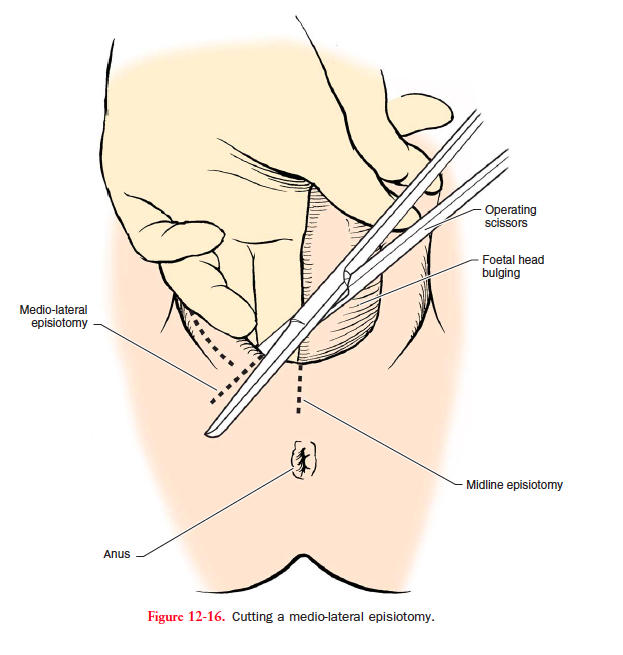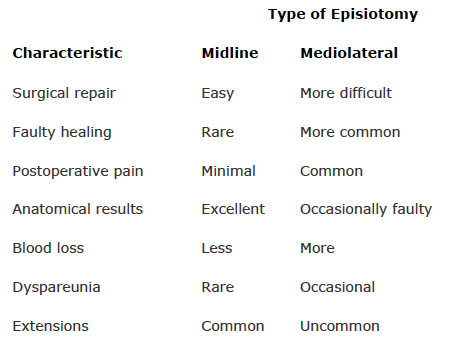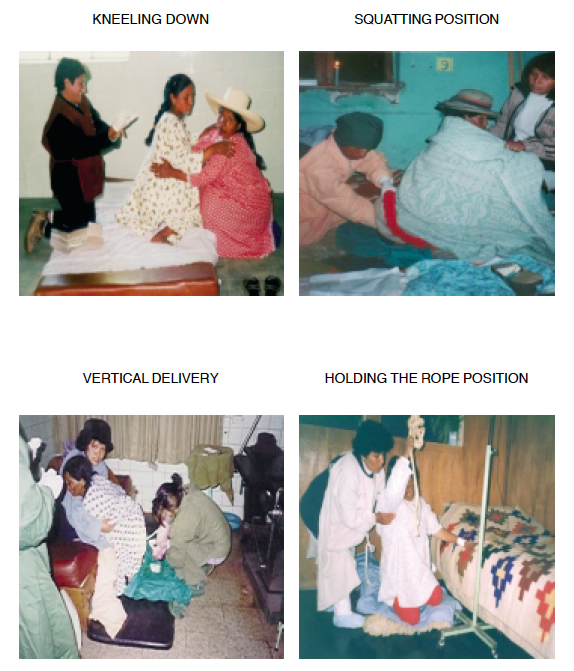First of all, I want to apologize that this blog has been somewhat barren lately…I’ve been working on another project in Cusco which has been taking up a good portion of my time.
With that said, I want to share a little bit about how childbirth takes place, and to highlight some of the different techniques and traditions that differ from childbirth in the U.S.
DISCLAIMER #1 – I’ve only seen deliveries in one hospital in the U.S. (Tampa General Hospital) and only in one hospital in Peru (Antonio Lorena Hospital, Cusco). Therefore, while these differences are interesting to point out, they cannot be generalized for all deliveries across both countries.
DISCLAIMER #2 – This post is not intended to pass any judgement on differences in childbirth between United States and Peru, but rather to point out some interesting observations that were noted.
1. The rooms – From the deliveries that I have seen in the U.S., the entire delivery process usually takes place in one private room (dilation stage, actual delivery, and post-partum recovery). However, here in Peru, there is no such thing as a private room. Most rooms are large, and hold several beds….therefore there is not much privacy for patients. Second, there are usually different rooms for different stages. There is a room that is used for the dilation process, where women will stay and wait until they reach 10 cm dilation (complete dilation).
Once dilation is complete, the patient will be escorted to another room down the hall, which is the delivery room. In this room the baby will actually be delivered. Again, this room is not necessarily private, and can occupy 2-3 patients at a time who may be in labor simultaneously. Finally, once delivery is complete, patients are transferred to an observation room (for 2 hours), and then finally to a post-partum recovery room where they will stay until they are discharged (again, none of these rooms are private).

This is the dilation room where women will stay until they are completely dilated (10 cm). This particular room can hold up to 4 women. Once completely dilated, they will be escorted down the hall to the delivery room.

This hall shows all the different rooms for different stages of childbirth. The first room on the left is the dilation room. From there the patient goes to the delivery room, the second room on the left. Once delivery is complete, the patient is taken directly across the hall on the right for 2 hours of observation. After 2 hours, the mother and her newborn are taken to a different ward where they can rest and recover.

This is the delivery room. Patients will step up onto the delivery chairs for the delivery process.

In this particular hospital (Antonio Lorena) they recently upgraded to electrically powered delivery chairs.
2. Patient accompaniment – Usually from what I saw in the U.S., family and friends were allowed to be in the patient’s room with her until the time of delivery. Once the delivery process is about to begin, usually all family and friends are asked to leave except a small number that the patient may request to stay (e.g. spouse, mother, close friend, etc.). However, here in Peru, family members are almost never allowed to accompany the patient, regardless of what childbirth process the patient is in. Although there were requests made from patients, I never saw any family members that were permitted to accompany the patient during the dilation stage, or the actually delivery (from what I was told, family members are not permitted because they are not prepared for the “graphic” nature of childbirth). Once a patient was transferred to the observation room, one family member was permitted to accompany the patient for a short period of time.
3. Health Providers – In the U.S., it is usually an Ob/Gyn physician (or resident if in an academic center) that attends to deliveries. There are also some midwives who attend to low-risk pregnancies. In Peru, there is a health profession occupation called “obstetra.” I would describe this occupation as being most similar to midwives in the U.S., but the term midwife in Peru, usually refers to someone who uses very traditional Andean methods for deliveries that are done in home.
In Peru, almost all deliveries are attended by “obsetras.” Ob/Gyn physicians rarely attend to deliveries, and usually only do so if there is some type of complication, or if the child is not progressing through the birth canal.
4. Epidurals? Analgesics? – In the U.S., epidural analgesia is almost standard for many childbirth deliveries. Epidural analgesia is usually offered to all patients, and I would suspect that the majority of women receive an epidural, especially if it is their first delivery. In Peru, there is no such thing as epidural analgesia. I’ve been told that epidural analgesia is not cost-efficient for its implementation in most public hospitals. The only time epidural analgesia is used is for cesarean sections. Some private clinics offer epidural analgesia, but it is very expensive and not covered by insurance. There is no other pain relief method offered to women, and I’ve often heard the obstetras describe Peruvian women as “valiente,” which translates to “brave” because they go through childbirth without any pain relief treatment.
5. Episiotomy – this is a surgical technique where an incision is performed in the perineum and posterior vaginal wall. This technique is sometimes employed to avoid soft tissue tears of the perineum, that can damage the rectal mucosa or sphincter. While in the U.S. this procedure appears to have declined in many birthing centers, and is usually done when a severe perineal tear appears inevitable. However, in Peru, implentation of episiotomy is usually standard procedure for all first-time deliveries.
There are different techniques to performing an episiotomy. In the U.S. a midline incision has become the standard of technique in most institutions. However, in Peru, a medio-lateral incision is the technique commonly employed. Both techniques have some advantages and disadvantages, as described below.

Image showing the technique of an episiotomy. Notice there are two different techniques -- midline and mediolateral incisions. From Beckman's

Table showing some of the main advantages and disadvantages of a midline vs. mediolateral episiotomy. Notice that a midline incision overall has more advantages, but has one major disadvantage that it can extend to create a 3rd or 4th degree tear (into the rectal mucosa or sphincter). From William's
The technique to repair an episiotomy also appears to be a bit different between the U.S. and Peru. In the U.S., usually the final layer (the skin) is sewed using an uninterrupted suture (usually subcuticular) to give a more aesthetically pleasing closure of the skin. However, in Peru, I have more often seen interrupted sutures (in other words, several separate suture knots used to close the skin). I have been told that the reasoning behind this technique is somewhat cultural — many women may continue doing strenuous work soon after childbirth that puts the suture closure at increased risk of re-opening. Therefore, separate sutures, instead of a continued interrupted technique provides more support and strength for the closure. In addition, I’ve been told that some women (possibly due to influence from husbands/partners) may not abstain from sexual relations for the necessary period of time, which again puts the suture closure at increased risk of re-opening.

Technique of episitomy repair more commonly employed in the U.S., which uses a continuous uninterrupted suture. From Blueprints Obstetrics and Gynecology 3rd edition.
6. Vertical Deliveries – In Peru there is a different technique of delivery called vertical birth. It is considered a traditional Andean method, and is more commonly used in rural areas where women are more accustomed to these techniques. However, vertical methods are also sometimes being implemented in hospitals as well.

Some of the different methods that encompass "vertical delivery."
While I am sure this is not an all-encompassing list of some of the differences in childbirth between the U.S. and Peru, they are some that I observed throughout my medical rotations. Feel free to add any comments, questions, or observations of your own.
References:
1. Williams Obstetrics, Twenty-Third Edition
2. Beckman Obstetric and Gynecology
3. Blueprints Obstetrics and Gynecology 3rd Edition
 A few weeks ago we decided to check out the local zoo in Cuzco. We each spent all of 3 soles to get in. We were told that it was a place where they’re rehabilitating animals and that they eventually plan to turn them back into the wild if possible.
A few weeks ago we decided to check out the local zoo in Cuzco. We each spent all of 3 soles to get in. We were told that it was a place where they’re rehabilitating animals and that they eventually plan to turn them back into the wild if possible.





 (The kid’s jacket snatched)
(The kid’s jacket snatched)
























 A view as we continued going up:
A view as we continued going up:
































































